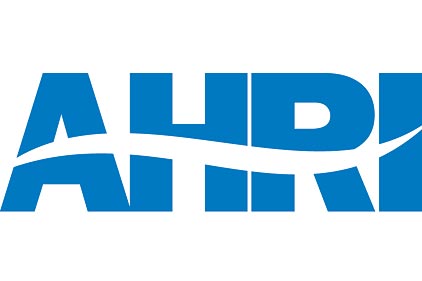 The Air-Conditioning, Heating, and Refrigeration Institute (AHRI) is moving forward with an ambitious project to identify low global warming potential (GWP) refrigerants.
The Air-Conditioning, Heating, and Refrigeration Institute (AHRI) is moving forward with an ambitious project to identify low global warming potential (GWP) refrigerants.According to Karim Amrane, AHRI vice president of regulatory and research, some 37 refrigerants are being tested including HFCs, HCs, HFOs, and ammonia. They were submitted by manufacturers including those in the United States, Europe, and Japan.
Testing will be done by the manufacturers as well as some universities and research laboratories, including one located in Paris. Amrane said testing is expected to begin in February. An interim report will be issued in July, he said, with the final report expected in November 2012.
Amrane said one factor in the decision to launch the program was that efforts within some sectors of the United States are pushing for a phasedown in HFC production.
Another factor, he said, was concern in Europe over high GWP f-gas refrigerants. Numerous associations and environmental groups in Europe have been promoting so-called “natural” refrigerants such as HCs, CO2, and ammonia as low GWP refrigerants. Amrane noted that the AHRI research program includes a number of HFCs and HFOs that manufacturers are promoting as having low GWP. Amrane said AHRI will publish the results without comment or declaring a winner. He said that those who are interested in using low GWP refrigerants will be able to review the AHRI results and then consult with refrigerant, component, and original equipment manufacturers for a range of applications.
Industry Cooperative
An 18-member AHRI technical committee was involved in formulating the program, which is officially known as the Low GWP Alternative Refrigerants Evaluation Program, or Low GWP AREP. AHRI described it as “an industry-wide cooperative research program to identify and evaluate promising alternative refrigerants for major product categories.”
The product categories include air conditioners, heat pumps, dehumidifiers, chillers, water heaters, ice makers, and refrigeration equipment.
In a statement, AHRI said the program “is strongly desired by the industry to assess the research needs, accelerate industry’s response to environmental challenges raised by the use of high GWP refrigerants, and avoid duplicative work.”
AHRI added, “The program consists of compressor calorimeter testing, system drop-in testing, soft-optimized system testing, and heat transfer testing. All tests other than heat transfer coefficient measurements are expected to be performed at participating companies’ laboratories, using their own resources, at their own expense.”
Wide Range of Refrigerants
Regarding the refrigerants, HFCs and ammonia are familiar to North American audiences. HFCs have gained widespread use as alternatives to CFCs and HCFCs. Ammonia continues to be widely used in industrial refrigeration applications, while advocates continue to promote its use in smaller systems, including commercial.
HCs such as propane and isobutane have been widely used in Europe and Asia, often in residential applications. HCs are expected to gain a stronger foothold in the United States with the recent announcement that the U.S. Environmental Protection Agency has granted Significant New Alternative Program (EPA-SNAP) approval to three HCs.
HFOs are hydrofluoro-olefins being developed as low GWP alternatives. One such HFO, 1234yf, is being introduced to the automotive air conditioning market in Europe with some research for stationary applications of HFOs continuing. Amrane said chemical compositions of many of the refrigerants being tested will not be announced by AHRI until the results are published this fall.
A Manufacturer Comments
At least one manufacturer has noted its participation in the program. In a press release issued Dec. 7, 2011, Arkema said it “is participating in the Low-GWP Alternative Refrigerants Evaluation Program (Low-GWP AREP) managed by the Air-Conditioning, Heating, and Refrigeration Institute (AHRI).”
“Arkema is developing low-GWP solutions to eventually replace higher GWP refrigerant products in most stationary market sectors,” said Brett Van Horn, Arkema’s global project leader for low GWP research for Forane® refrigerants.
“As part of that long-term effort, we submitted several next-generation refrigerant candidates to AHRI’s Low-GWP AREP. Arkema’s candidates were designed to balance a lower GWP with safety and efficiency in different stationary applications,” Van Horn explained. “For example, Arkema’s ARM-42, with a GWP less than 150, is a low-GWP refrigerant under development for use in chillers.”
“We’re also developing lower GWP refrigerant options to retrofit existing stationary systems,” said Van Horn. “ARM-32, for example, is a nonflammable blend designed to replace R-22 or R-404A, having a GWP of only about 1,500 compared to 3,900 for R-404A — a more than 60 percent reduction in GWP.
“Looking further down the road, we are working on low-GWP options for stationary air conditioning,” said Van Horn. “HFC-410A, widely used in these applications, already provides an excellent environmental profile, so the challenge will be finding lower GWP options that still provide an acceptable balance of safety and efficiency.”
Publication date: 01/23/2012








